How to create a USB toolkit to solve any computer problem
If you are a computer savvy person in the eyes of your friends and family, you will probably be asked to find and fix problems with their computers very often. If you can't refuse to help people, take the initiative to find and prepare a full set of flash drives to solve all problems.
With a set of drives containing portable versions of useful PC repair and maintenance programs, along with a number of troubleshooting utilities, you'll be ready to solve any problems.
Step one: Prepare the drive (s) you need
All USB drives work with this guide. Most portable apps below may fit on any flash drive (although some tools require a dedicated drive that you can boot from). This even allows you to resolve problems on the computer that have not been turned on.
The best approach is probably to have a fast, large-capacity drive, with most standalone programs (and you can also use it for your personal files), and a handful of drives. cheaper, lower capacity disks for autostart utilities.

Recommended article Kingston's DataTraveler SE9 series . It comes with support for USB 3.0 ports for fast operation on supported computers, and it allows for additional drives. At the time of writing, the 64GB version is very reasonably priced, $ 27 on Amazon, and less capacity for self-boot tools that are quite good and cheap.
Step two: Set of tools
Below are the recommended tools for you and their uses. Now, you can download all the tools to your computer; and then they will be added to the toolkit in the next step.
Google Chrome Portable: You don't want to use someone else's browser, right? The link above is a modified version of Chrome, launched from any directory, updated with the latest stable release from Google.
Revo Uninstaller: This tool is a quick way to uninstall applications, such as bloatware (utility software in a trial for a certain number of days) that is usually available in new machines. It has a few useful extras, such as a " Hunter Mode " that can uninstall programs just by pointing to their windows - great for removing crapware that you're not sure of. Best of all, it can also completely erase leftover folders in places where the home directory and boot menu are located.
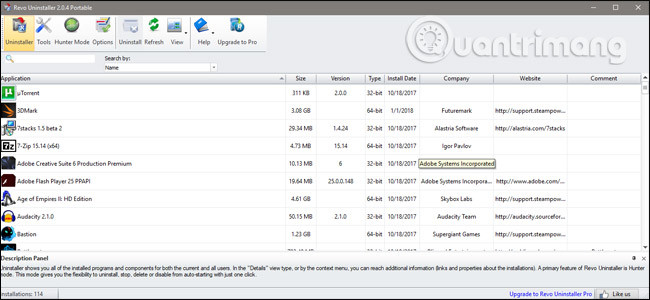
Avira Rescue System: This is a self-starting tool that can clean viruses, malware and other annoying things in the operating system. It requires a separate USB drive. Please ensure periodic updates for the official free software tool.
CrystalDiskInfo: This is a tool to check the health and life of a hard drive. Very handy if you think the PC memory is faulty.
Speccy: Speccy is an easy way to quickly see all the specifications of your computer, including unclear information such as the number of installed DIMM RAM and the number of expansion slots used. .

Process Explorer: A tool to help you identify running processes. Handy to identify malware and other bad content running.
AdwCleaner: This is a search engine and adware removal tool - annoying tools that tend to install themselves when users accidentally download free programs that come with all types malicious advertising. The program is a standalone executable file, which you can launch from a USB drive.
Peerblock: Peerblock is a fast firewall, selectively blocking incoming and outgoing traffic.
MBRtool: This is not a standalone application, but a bootable tool, requires its own flash drive. Once you create it, you can put this drive on any PC and boot from it to repair the master boot record (MBR), one of the most common causes of the operating system boot error.
Download link:
http://www.diydatarecovery.nl/mbrtool.htm
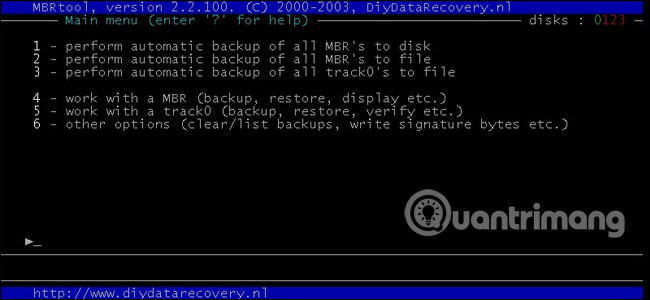
HWMonitor: This is an easy way to test all kinds of secret hardware and the installation usually does not show up in Windows, like all thermal sensors on the motherboard. Especially useful if you are adjusting PC Gaming or PC performance.
Download link:
http://www.softpedia.com/get/PORTABLE-SOFTWARE/System/System-Info/Portable-HWMonitor.shtml
Wireless Network Watcher: This program can show you all devices connected to the local network, including their IP address and MAC address. Very useful if something causes network problems or you suspect someone is using the network without permission.
WinDirStat: This is a disk analysis and cleaning tool. It is very useful in quickly finding large and unnecessary files to free up the full disk space. If you like a better graphic layout, SpaceSniffer is a pretty good (or additional) alternative.
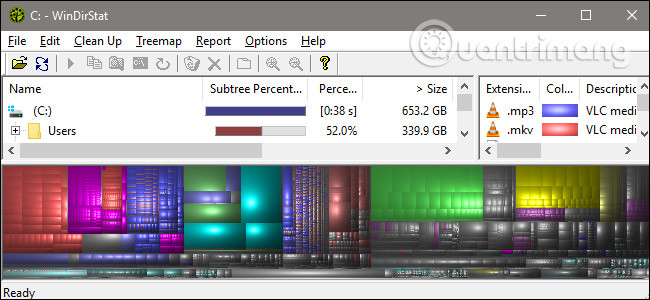
NirSoft password recovery tools: This is a collection of programs designed to recover usernames and passwords, if there is no easy recovery option, like email recovery. Different tools work on web browsers, wireless networks, Windows Protected Networks and even remote desktop tools.
Hiren's Boot CD: Hiren's Boot CD is an 'all-in-one' package, including a variety of tools to repair and optimize computers, all included in a bootable CD file. Don't let its name fool you. You can also run it from a dedicated USB drive.
( Note : Hiren's Boot CD actually contains a number of tools that have been included in this tutorial, plus many other tools - but having your own version of the tool on a drive that cannot boot will help. Work became easier, so Hiren's Boot CD was added to the list).
ProduKey: This is another Nirsoft tool. This helps you find other Windows keys and registration keys, in case you can't verify legitimate copies, even from other computers on the local network. It's a portable 'all in one' application, but using its advanced functions requires a bit of knowledge about using the command line.
Download link:
http://nirsoft.net/utils/product_cd_key_viewer.html
ShellExView: Tool to clean all crapware from the right-click menu in Windows after you have removed programs that should not be downloaded.
BlueScreenView: This very useful tool will show you the results and minidump files on the blue screen just like when your computer hangs.
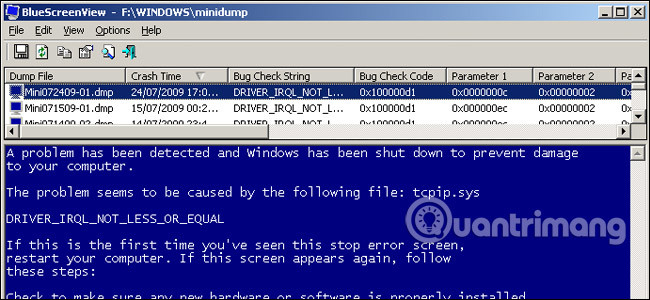
The Official Windows Recovery Drive: Finally, don't forget that you can also create a USB recovery drive from within Windows and if you often have to fix someone's computer yourself, this may be an idea. or when you have fixed all problems and put your computer into active status. It requires its own flash drive.
Step three: Create your drive
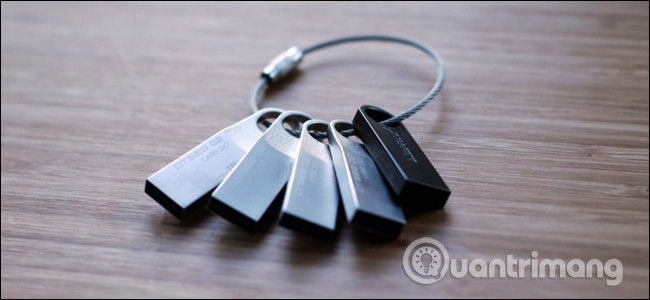
The set of tools you need is a difficult part, the rest is super easy. Plug in your large flash drive and drag all the portable tools you downloaded into it (preferably sort into folders, because many portable tools can create additional files when you launch them for the first time).
However, there are a few tools on the list that require their own dedicated flash drive, so you can boot from these drives. That's where the idea of this toolkit works.
MBRTool is like an installer, so you will need to install it on your computer, then use the newly installed application to create a bootable flash drive.
To burn Hiren's Boot CD and Avira Rescue System into their own flash drive, you'll need to get their ISO files and use a tool called Rufus to 'burn' them to a flash drive.
To create Windows Recovery Drive, you can refer to the following articles:
- Create USB drive to recover Windows 8
- Create USB Recovery in Windows 8.1
- Create Recovery Recovery hard drive for Windows 10
When you're done, you'll have a great set of tools you need to troubleshoot someone's computer. Feel free to combine and customize your drive to your liking!
See more:
- Instructions for troubleshooting computer problems
- Common mistakes when using a computer
- Top sites that support computer troubleshooting and technology
You should read it
- How to fix Windows 11 computer overheating problem
- Troubleshoot computer problems that do not start
- How to Avoid Costly Computer Service Calls
- Tricks to fix the computer or hang
- Learning to use a computer 19 - Use built-in help tools
- 6 'absolute' things should not be done when maintaining Windows computers
- Troubleshooting TCP / IP: Structure method - Part 3: Fix network connections
- 20 useful troubleshooting tools for Windows 10
May be interested
- How to clean junk files when drive C on the computer is full
 if your computer's c drive is full and everything is slow, save these simple fixes to solve this problem quickly and effectively.
if your computer's c drive is full and everything is slow, save these simple fixes to solve this problem quickly and effectively. - How to Use Scribe Al to Troubleshoot Home Computers
 scribe ai is a game-changer for this problem. it allows you to create easy-to-follow, step-by-step instructions so family members can solve problems themselves, even when you're away.
scribe ai is a game-changer for this problem. it allows you to create easy-to-follow, step-by-step instructions so family members can solve problems themselves, even when you're away. - How to Delete Undelete Files
 this is an article showing how to delete regular files that cannot be deleted on your computer. in most cases, files that cannot be deleted are being used by some program or service; you can solve the problem by starting your computer in safe mode to stop most programs and services. if the file is corrupted or the computer reports that the file cannot be found, repairing the hard disk error may fix the problem. on android phones and tablets, you can use third-party apps to delete files. however, the article does not instruct on deleting system files, as this may cause the computer to crash.
this is an article showing how to delete regular files that cannot be deleted on your computer. in most cases, files that cannot be deleted are being used by some program or service; you can solve the problem by starting your computer in safe mode to stop most programs and services. if the file is corrupted or the computer reports that the file cannot be found, repairing the hard disk error may fix the problem. on android phones and tablets, you can use third-party apps to delete files. however, the article does not instruct on deleting system files, as this may cause the computer to crash. - 10 things to do when Windows XP does not start
 when your computer hardware doesn't have a problem, but windows xp does not completely boot properly, study this article. it will show you the steps to take to solve the problem from entering the operating system, learning and 'handling' the problems that caused the machine error.
when your computer hardware doesn't have a problem, but windows xp does not completely boot properly, study this article. it will show you the steps to take to solve the problem from entering the operating system, learning and 'handling' the problems that caused the machine error. - How to download and install Windows Performance Toolkit in Windows 10
 this guide will show you how to download and install the windows performance toolkit to use the windows performance recorder, gpuview and windows performance analyzer tools in windows 10.
this guide will show you how to download and install the windows performance toolkit to use the windows performance recorder, gpuview and windows performance analyzer tools in windows 10. - How much do we try together with the 33x33 problem?
 the final exam should not be for the mind to be lazy, it is really dangerous. try to solve this controversial problem on quora.
the final exam should not be for the mind to be lazy, it is really dangerous. try to solve this controversial problem on quora. - How to fix computer errors or hangs, frozen
 how to fix computer errors or hangs, frozen. our computer systems are not always in a 100% stable state, they are affected by many different reasons due to many components. in order to solve the problem of computer crashes or freezes, we have to go through many general inspection steps
how to fix computer errors or hangs, frozen. our computer systems are not always in a 100% stable state, they are affected by many different reasons due to many components. in order to solve the problem of computer crashes or freezes, we have to go through many general inspection steps - What is the computer currently attempting repairs? Go find a solution
 the computer is currently attempting repairs but cannot access windows, which is a very annoying situation. and to solve this problem, please read the article.
the computer is currently attempting repairs but cannot access windows, which is a very annoying situation. and to solve this problem, please read the article. - How to solve the problem of headphones plugged into a laptop jerking
 the problem of headphones plugged into a laptop is a problem that worries many people. to no longer encounter this error, please apply this trick
the problem of headphones plugged into a laptop is a problem that worries many people. to no longer encounter this error, please apply this trick - The places where famous worshiping and worshiping ceremonies are held in Hanoi
 according to the old concept, each year, each person has a different star star, including good stars and bad stars. if a bad star is encountered, it is necessary to make a star award ceremony at the temple or at home to neutralize the term for the whole year.
according to the old concept, each year, each person has a different star star, including good stars and bad stars. if a bad star is encountered, it is necessary to make a star award ceremony at the temple or at home to neutralize the term for the whole year.










 Summary of common VPN error codes
Summary of common VPN error codes 5 ways to enter the Windows 10 key the easiest
5 ways to enter the Windows 10 key the easiest Ways to fix BSOD blue screen error
Ways to fix BSOD blue screen error How to fix 408 Request Timeout error
How to fix 408 Request Timeout error Common network connection errors and solutions
Common network connection errors and solutions How to fix an open CD / DVD drive error automatically
How to fix an open CD / DVD drive error automatically